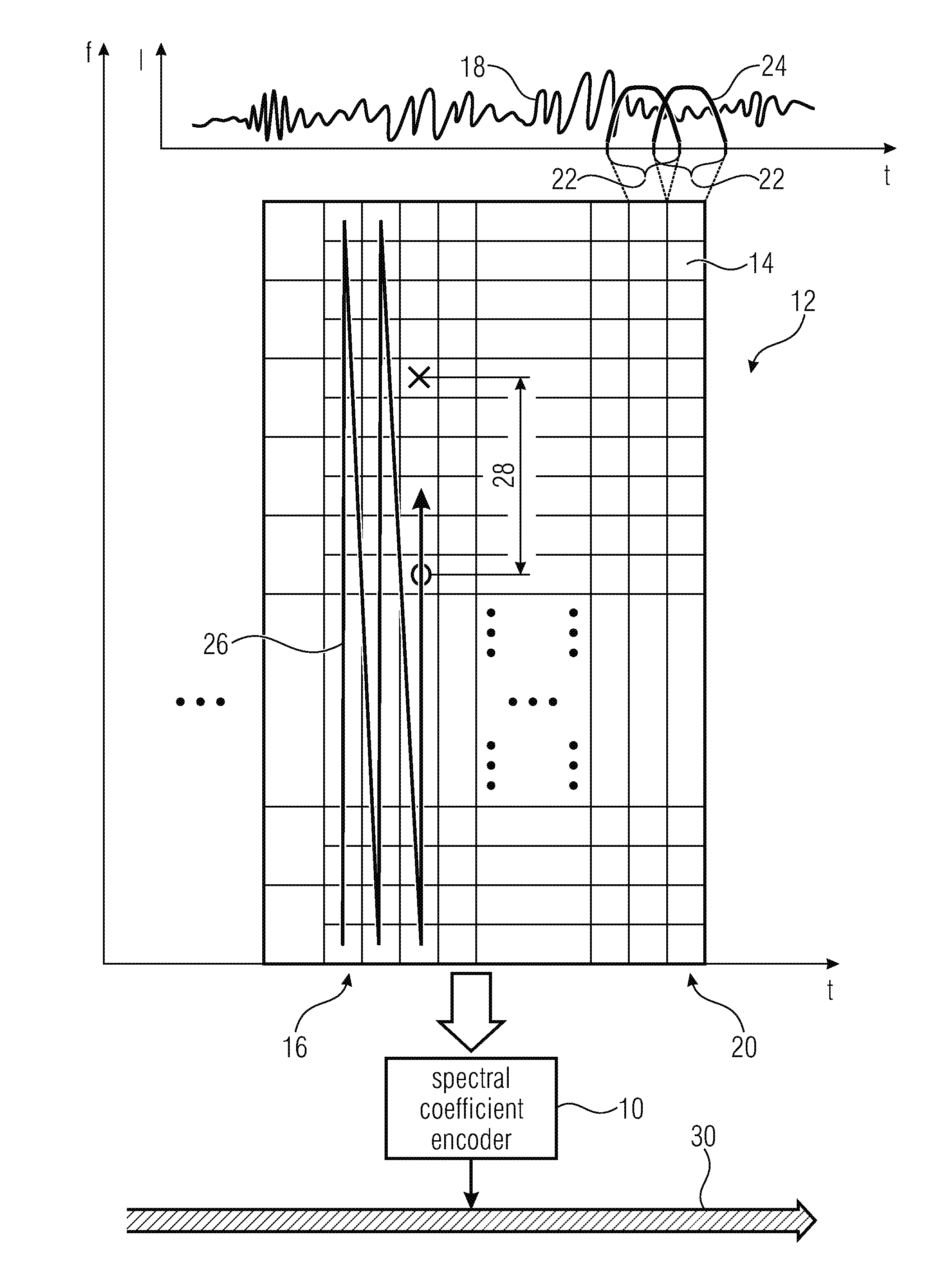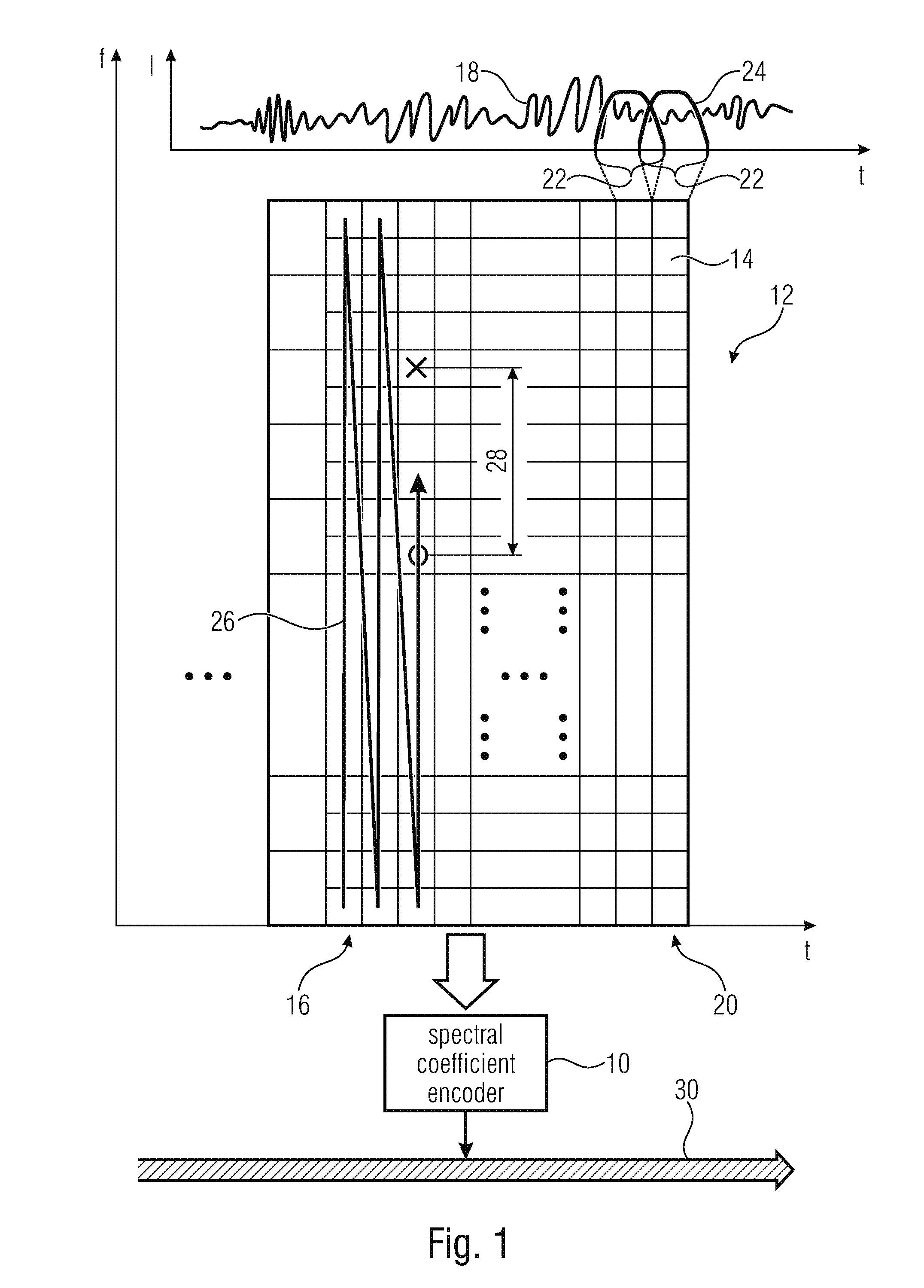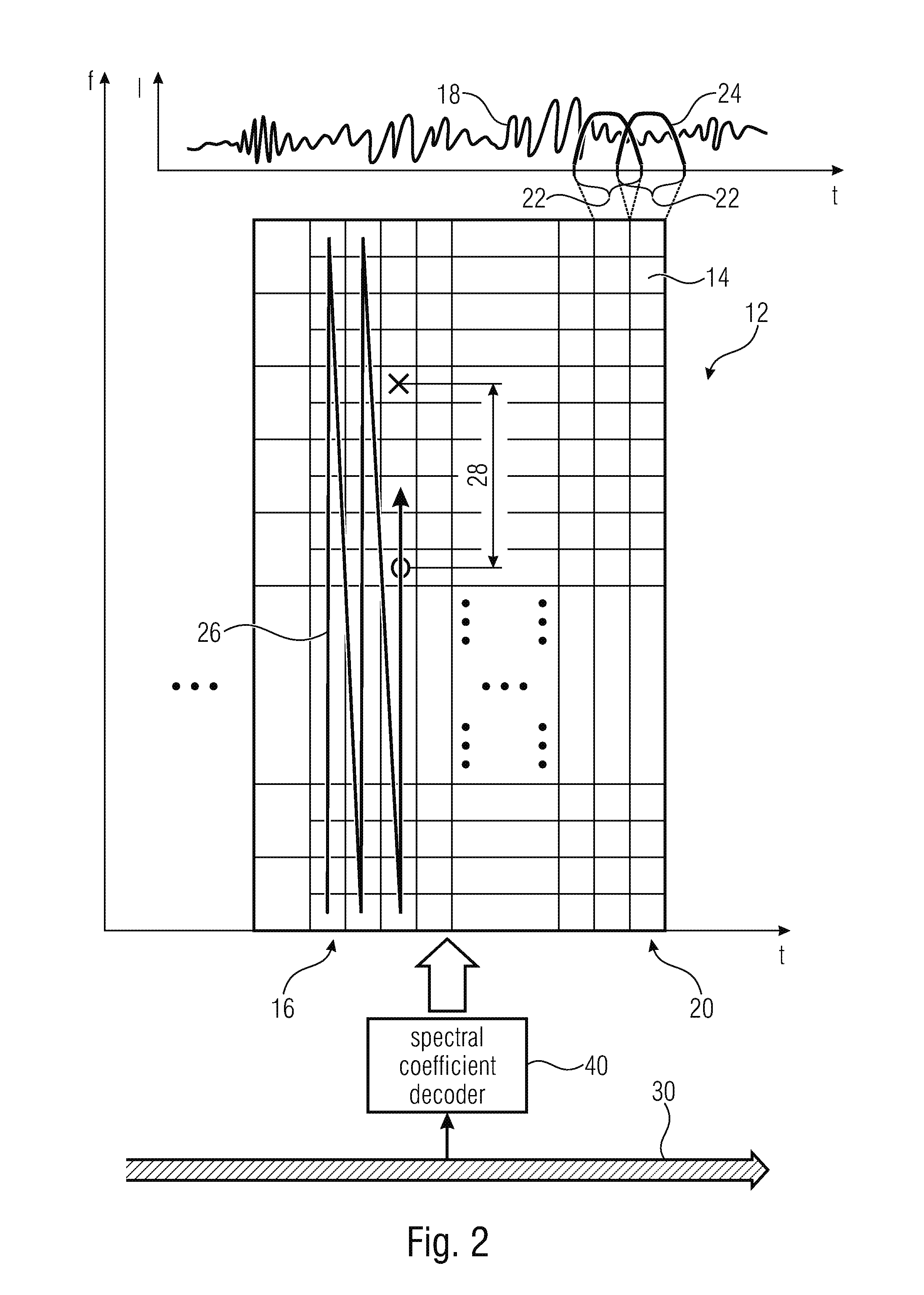Coding of spectral coefficients of a spectrum of an audio signal
a spectrum and audio signal technology, applied in speech analysis, electric instruments, speech analysis, etc., can solve the problems of reducing the efficiency of context-based entropy coding, serious constraints in context design, and reducing the coding efficiency, so as to enhance the entropy coding efficiency and increase the coding efficiency of coding spectral coefficients of a spectrum of an audio signal
- Summary
- Abstract
- Description
- Claims
- Application Information
AI Technical Summary
Benefits of technology
Problems solved by technology
Method used
Image
Examples
first embodiment
2-Tuple Coding and Mapping
[0086]First the optimal distance is search in a way to reduce at most the number of bits needed to code the current quantized spectrum x[ ] of size N. An initial distance can be estimated by D0 function of the lag period L found in previously performed pitch estimation. The search range can be as follows:
D0−ΔD<D0+Δ
[0087]Alternatively, the range can be amended by considering a multiple of D0. The extended range becomes:
{M·D0−ΔD<M·D0+Δ:MεF}
where M is a multiplicative coefficient belonging to a finite set F. For example. M can get the values 0.5, 1 and 2, for exploring the half and the double pitch. Finally one can also make an exhaustive search of D. In practice, this last approach may be too complex. FIG. 18 gives an example of a search algorithm. This search algorithm may, for example, be part of the derivation process 82 or both derivation processes 82 and 84 at decoding and encoding side.
[0088]The cost is initialized to the cost when no mapping for ...
second embodiment
2-Tuple with 1-Tuple Mapping
[0098]In this second embodiment, the spectral components are still coded 2-tuples by 2-tuples but the contextMapping has now a resolution of 1-tuple. That means that there are much more possibilities and flexibilities in mapping the context. The mapped context can be then better suited to a given signal. The optimal distance is searched the same way as it is done in section 3 but this time with a resolution r=1. For that, normVect[ ] has to be computed for each MDCT line:
for(i=0;i normVect[i]= pow(abs(x[2*i]NORM,);}
[0099]The resulting context mapping is then given by a table of dimension N. LastNz is computed as in previous section and the encoding can be described as follows:
Input: lastNzInput: contextMapping[N]Input: spectrum x[N]output: coded bitstreamlocal: context[N / 2]for ( k=0,i = 0 ; k / * Next coefficient to code* / while(contextMapping[i]>=lastnz) i++; a1_i=i++; / * Next coefficient to code* / while(contextMapping[i]>=lastnz) i++; b1_i=i++; / *Get co...
PUM
 Login to View More
Login to View More Abstract
Description
Claims
Application Information
 Login to View More
Login to View More - R&D
- Intellectual Property
- Life Sciences
- Materials
- Tech Scout
- Unparalleled Data Quality
- Higher Quality Content
- 60% Fewer Hallucinations
Browse by: Latest US Patents, China's latest patents, Technical Efficacy Thesaurus, Application Domain, Technology Topic, Popular Technical Reports.
© 2025 PatSnap. All rights reserved.Legal|Privacy policy|Modern Slavery Act Transparency Statement|Sitemap|About US| Contact US: help@patsnap.com



